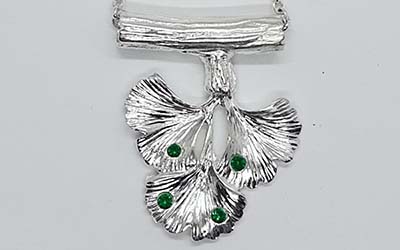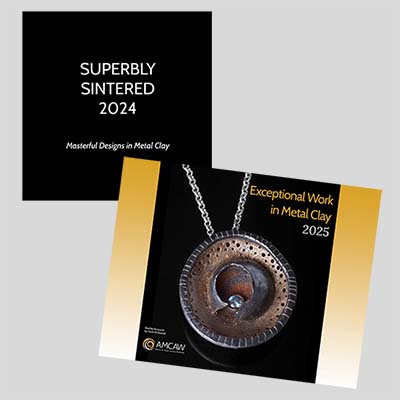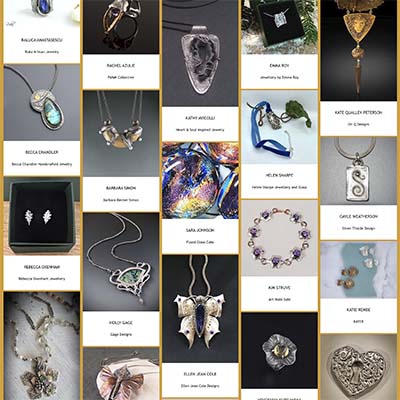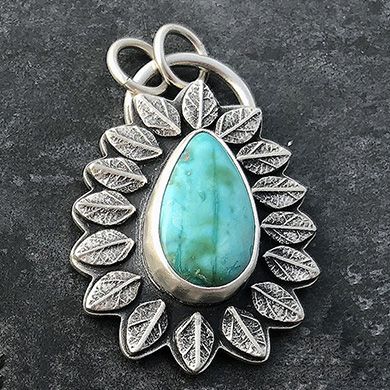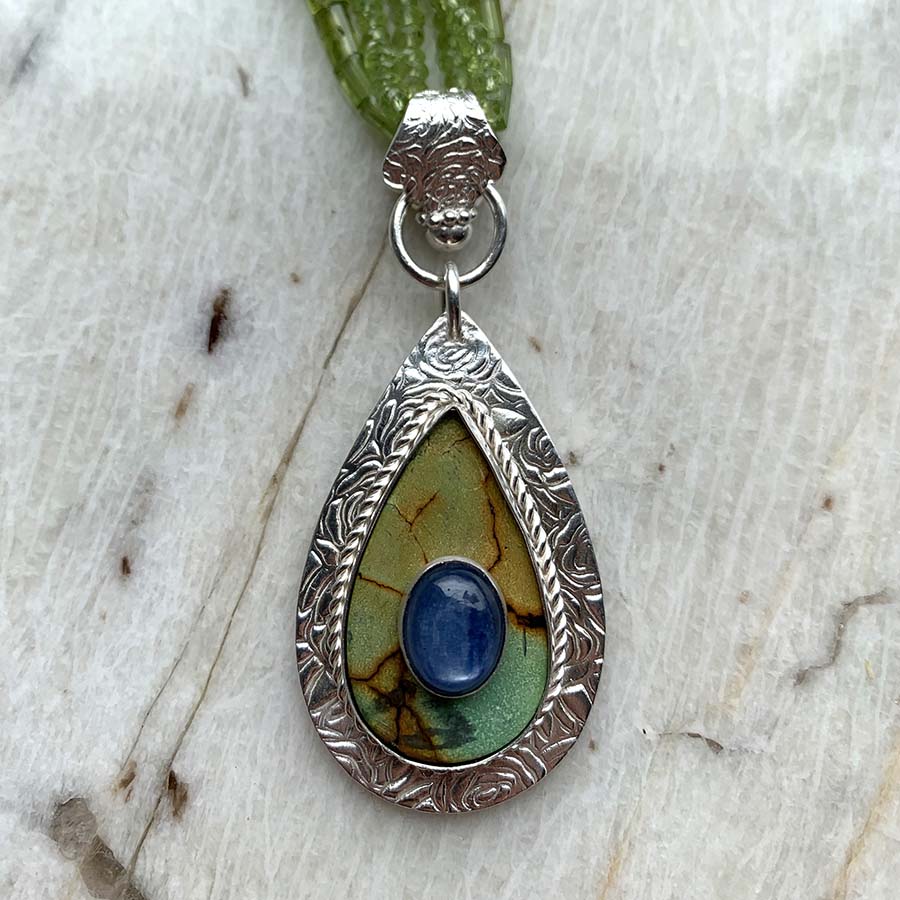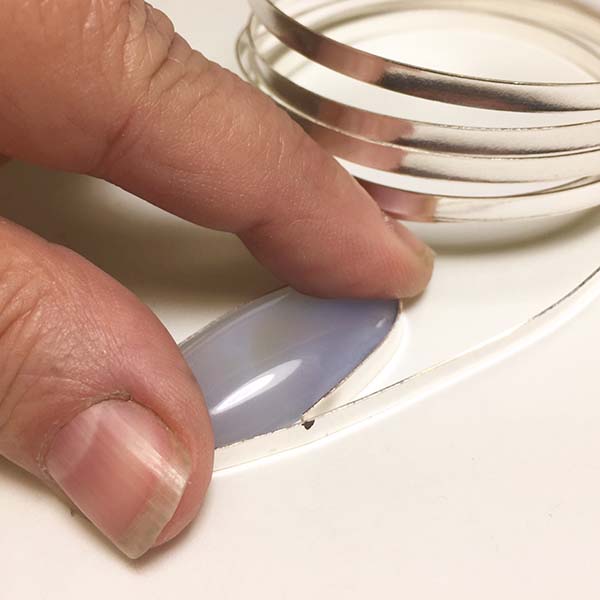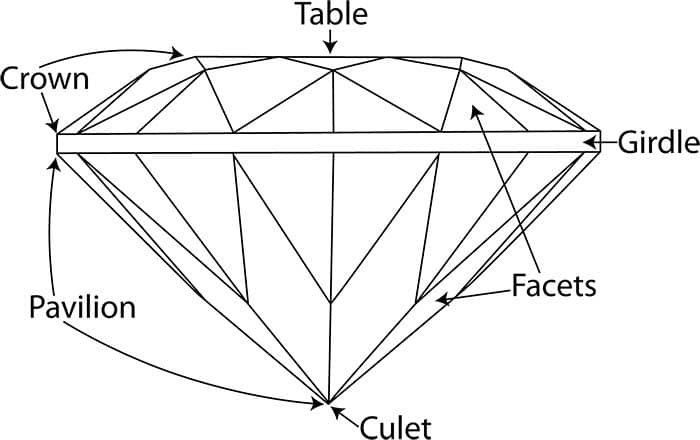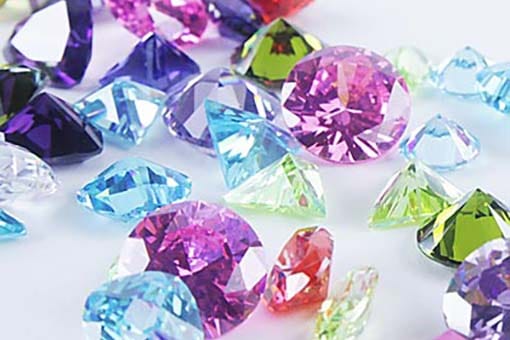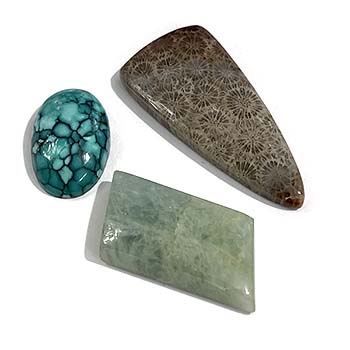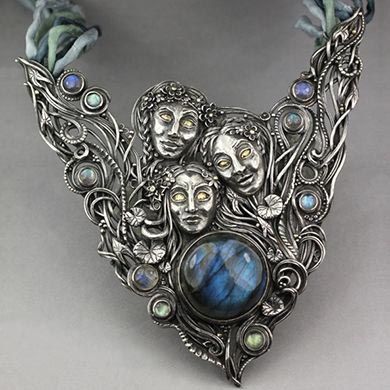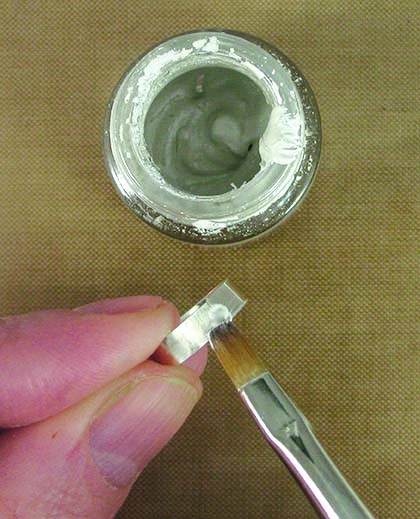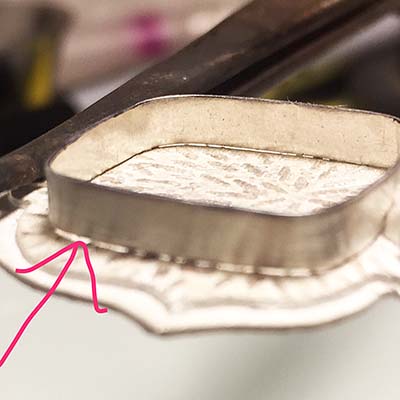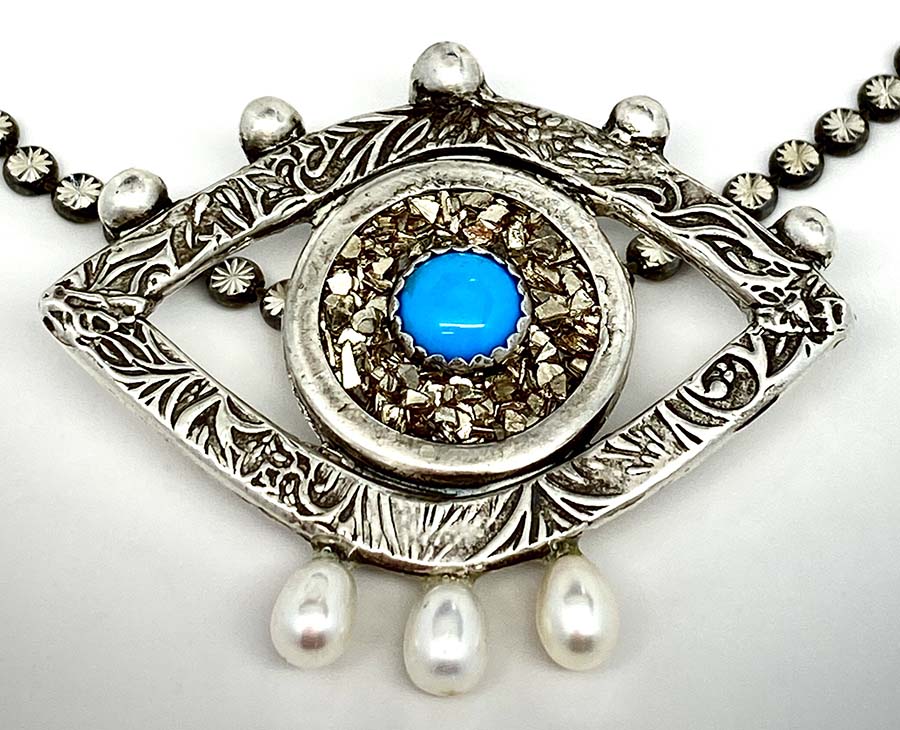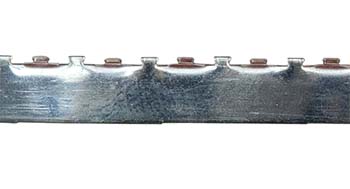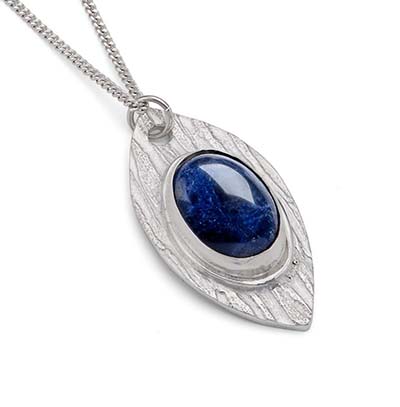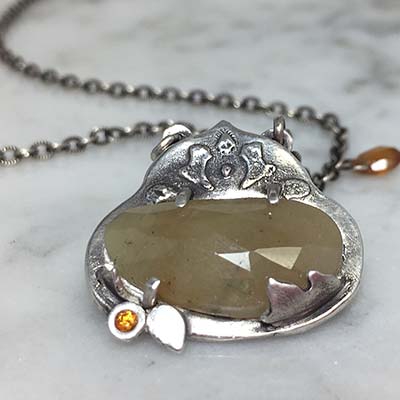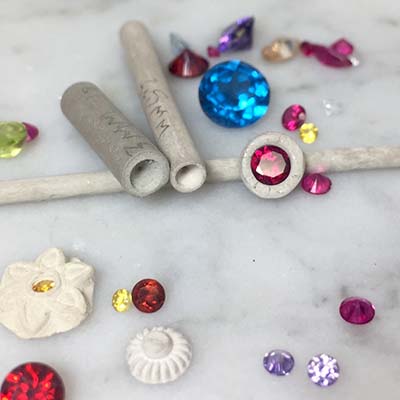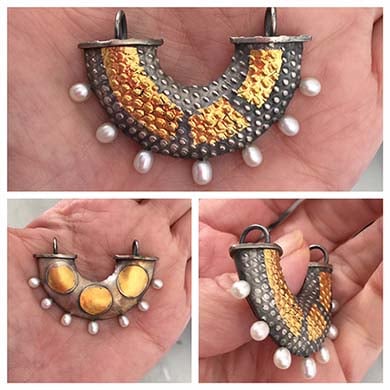Cast Basket Settings
Intended for use with faceted stones, commercially manufactured cast settings are available from many different vendors in sterling, fine silver, gold, and other metals. These findings are built to look like a basket with two round rings attached to four straight wires. This basket, with the rings stacked one on top of the other, is used to hold the culet of a faceted stone off the surface of the piece it will be set on. The girdle of the stone rests on the uppermost ring, and the straight wires are meant to be bent around it and onto the crown facets. These types of settings will usually need some filing and sanding in order to fit the stone perfectly.
Basket settings have also been manufactured specifically to be used with metal clay. Sometimes the wire that forms the prongs extends past the bottom ring and is intended to be implanted into the metal clay base. Some will have a pre-cut notch on the inside of the wires designed to cup and bend around the girdle of the stone more easily, but these may also need some adjustments to fit perfectly.
As with any milled or cast metal implant, sand or file the metal where it will be embedded into clay and dip in slip before placing it. Metal clay will ‘shrink to fit’ the finding, creating a mechanical connection.


